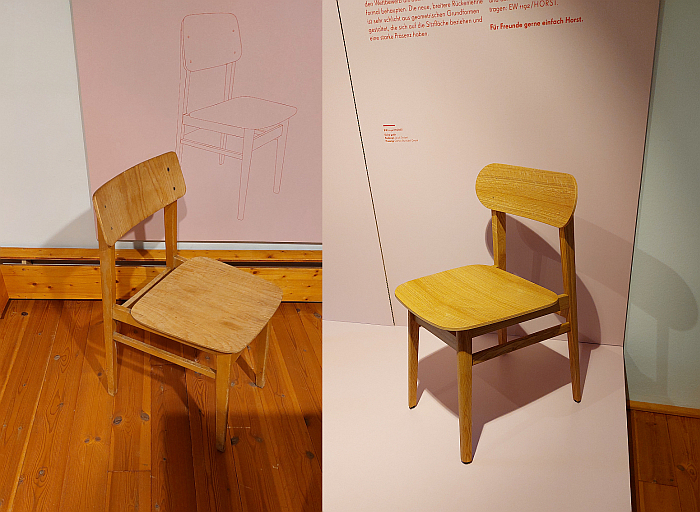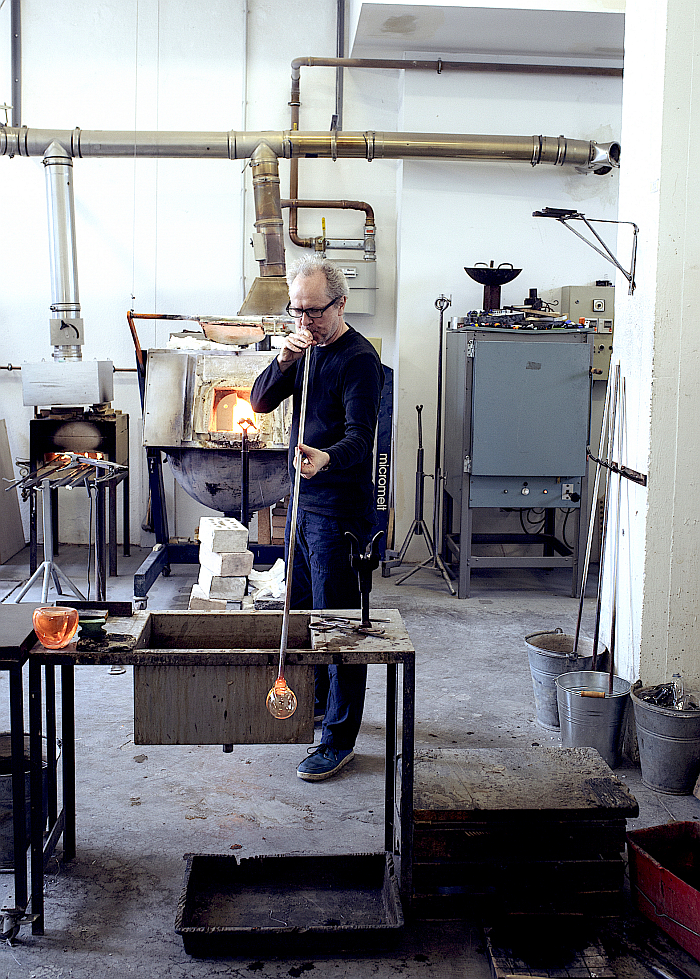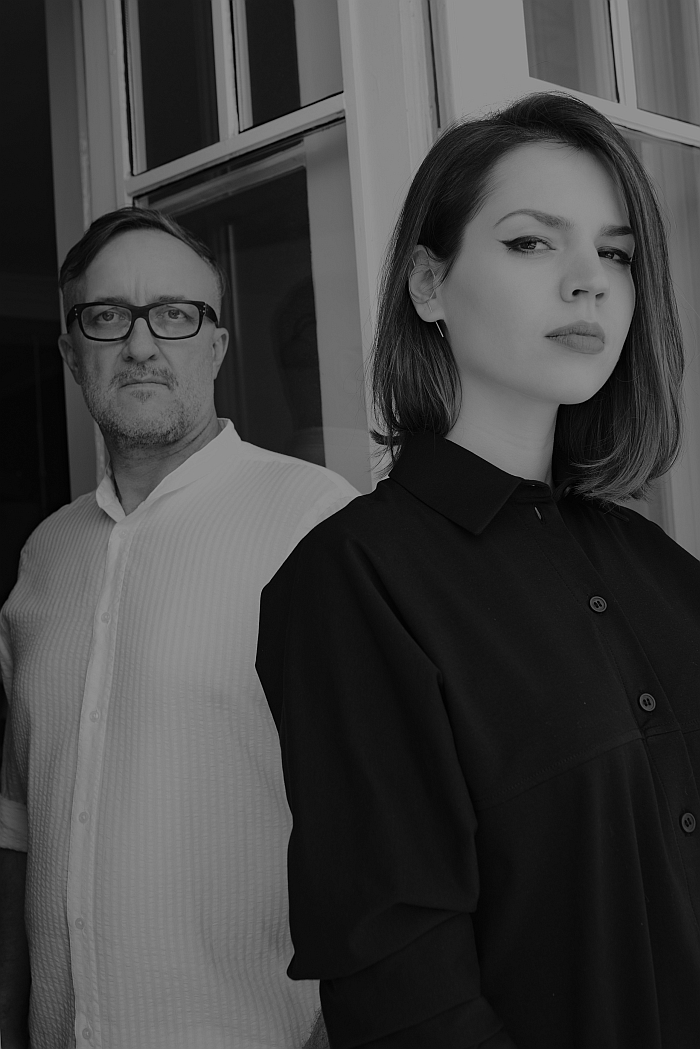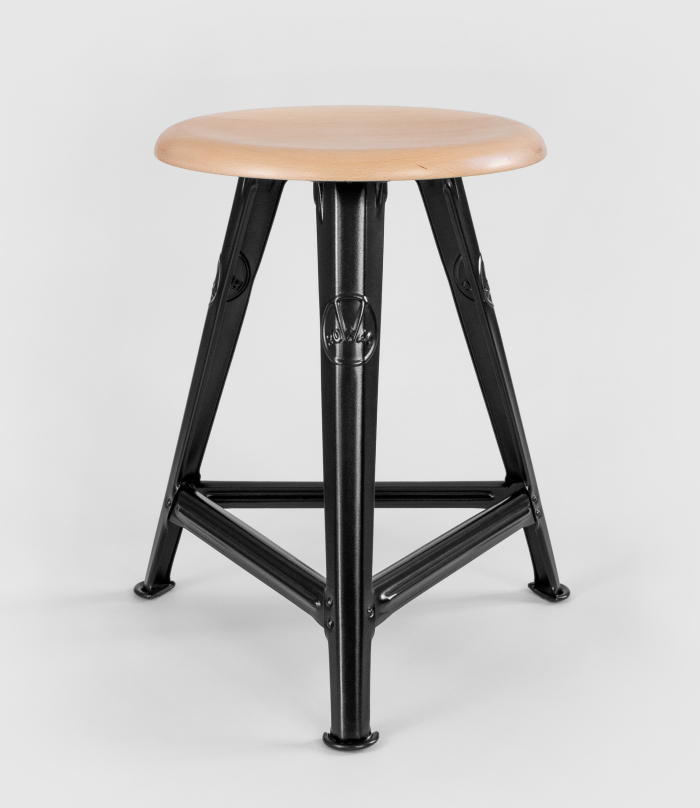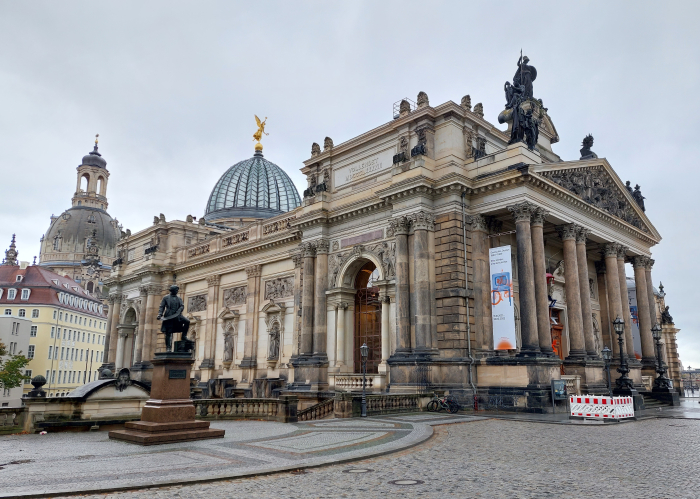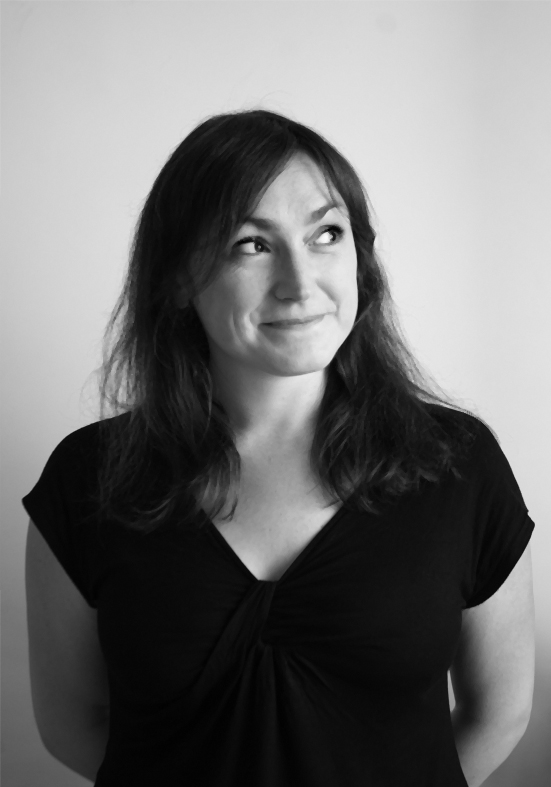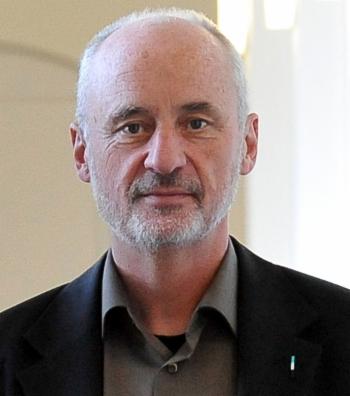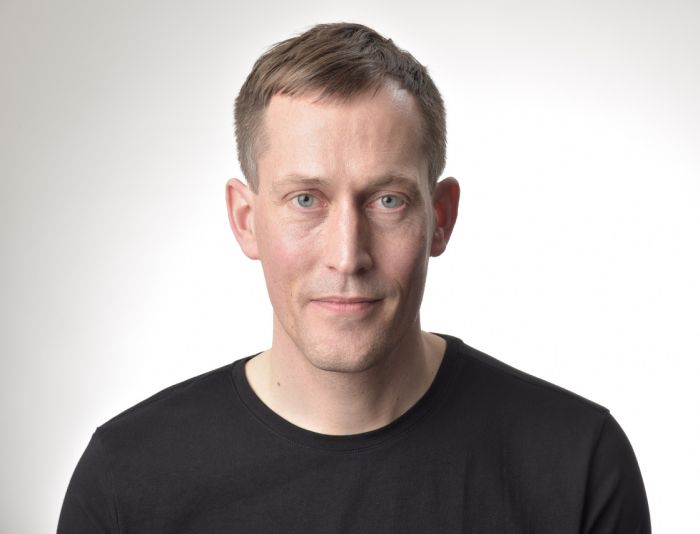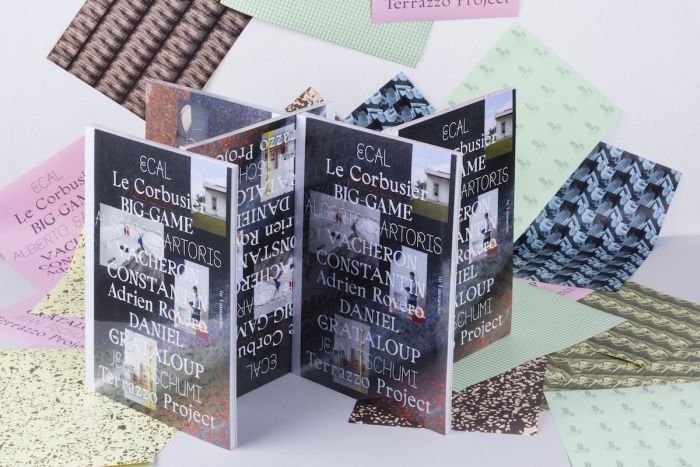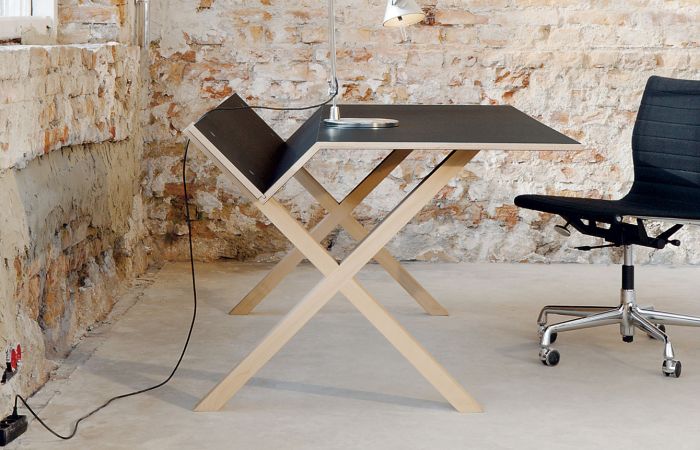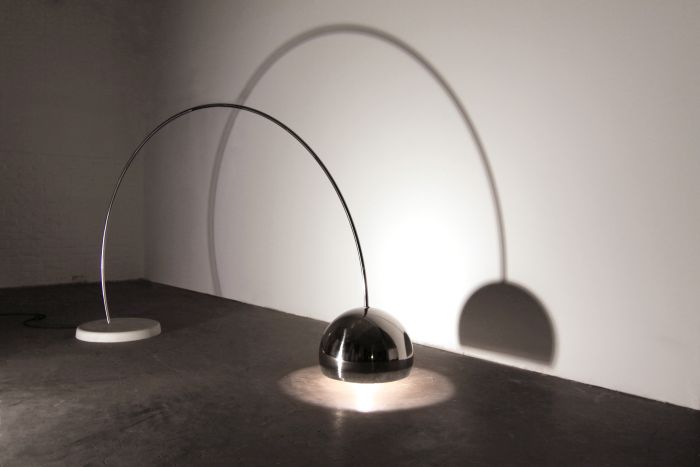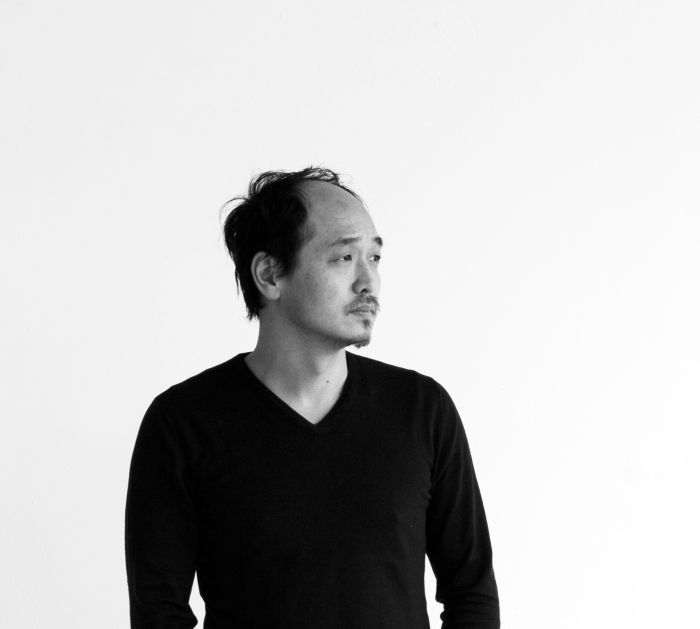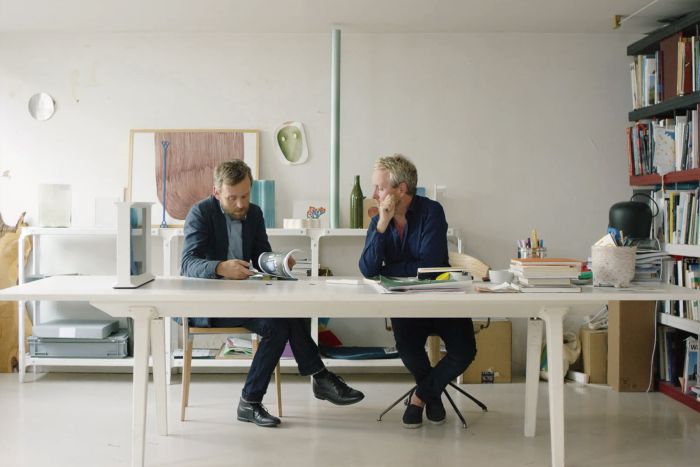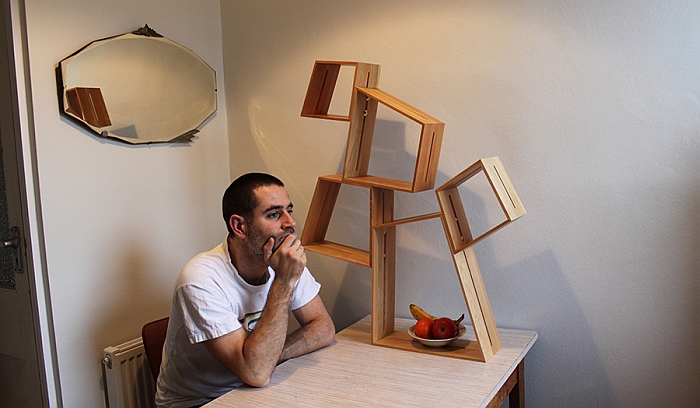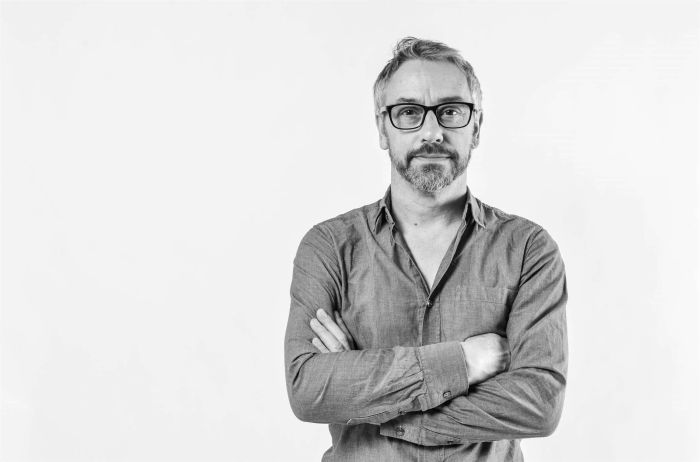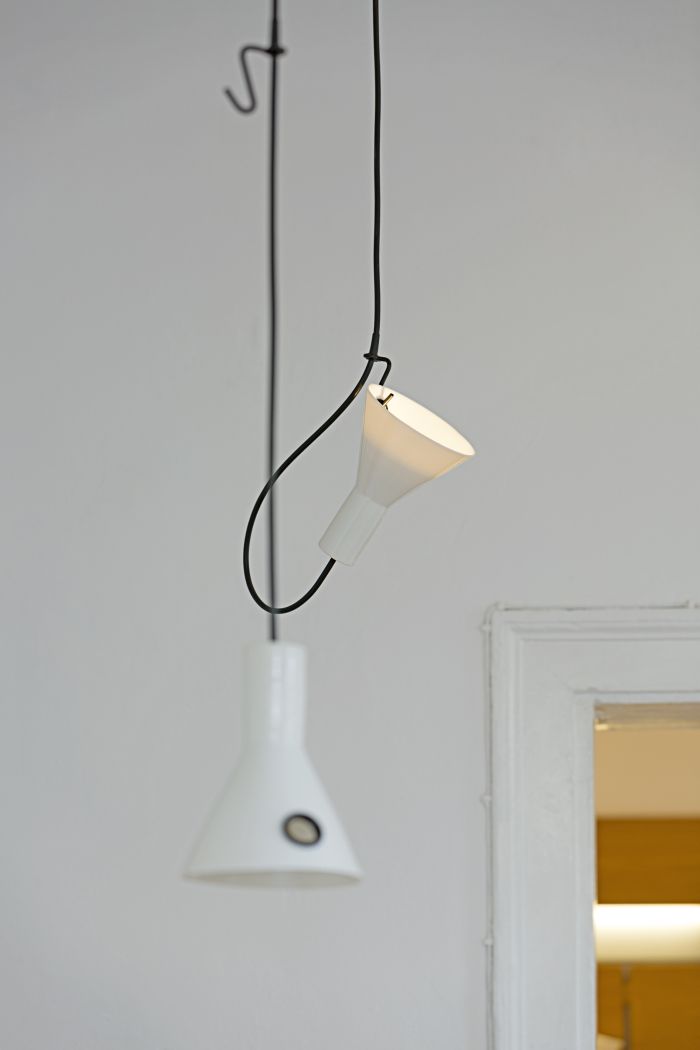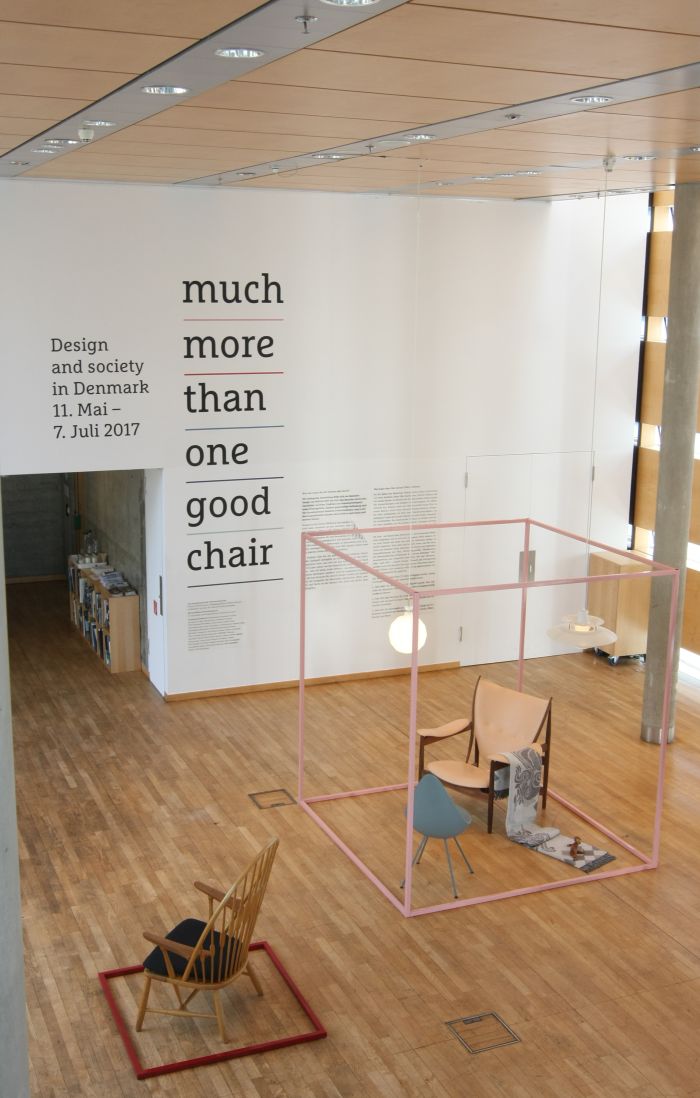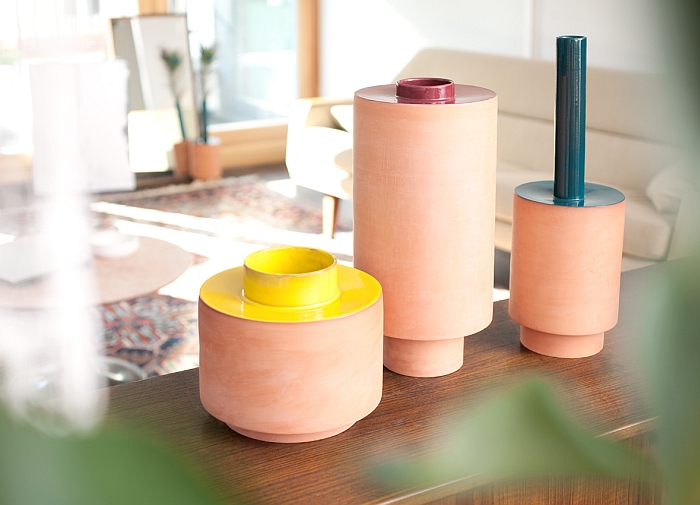Category: Interview
Hallo Horst! Or, How, and why, the EW 1192 became Horst…….
As noted from the exhibition Der ungesehene Designklassiker at the Deutsches Stuhlbaumuseum, Rabenau, alongside the introduction, re-introduction, enabled to the EW 1192 by Horst Heyder, a work that was, in all probability, the most widely found, most widely used, chair in the DDR and, potentially, one of the chairs existent in the greatest population densities anywhere ever, and thus a chair that inarguably shouldn’t need to be re-introduced, but which on account of the nature of the development of Europe since 1989 sadly does, one also finds a contemporary 21st century re-design of the EW 1192 by Leipzig based designer Jacob Strobel.
A re-design that poses the question darf one re-design a work such as the EW 1192?, is one allowed to re-design a work such as the EW 1192?
¿Is one allowed to re-design a work that was one of the most widely found, most widely used, chairs in the (hi)story of a nation?
¿Is one allowed to re-design a work that so eloquently and succinctly allows access to more nuanced appreciations of the (hi)story of furniture design in the DDR?
¿Is one allowed to re-design a work that is one of the few surviving testaments to the work of Horst Heyder, an individual who played an important role in the development of furniture design in the DDR?
¿Is one allowed to re-design a work that is one of the few surviving testaments to the work of the Entwicklungsbüro Waldheim, an institution who played an important role in the development of furniture design in the DDR?
¿Is one allowed to re-design a work that is an artefact of daily life in the DDR, in a nation no longer existent?
¿Darfst du?
???
Standing in the Deutsches Stuhlbaumuseum looking at that contemporary re-design it occurred to us that there was one person particularly well placed to answer that question, one person who’d already considered it in a lot more detail than us. So we we asked them: ¿Is one allowed to re-design a work such as the EW 1192, Jacob Strobel?
¿Darfst du?
smow Blog Interview: Cornelius Réer – Honing the good ideas so that they result in fantastic products, that’s the task
Born in Coburg, Franken, in 1961 Cornelius Réer took his first steps in the world of glass via an apprenticeship at Glashütte Süßmuth, Immenhausen, near Kassel, followed by periods working in Austria and Sweden and a nine month course at Brierley Hill Glass Center in Dudley, England, before returning to Franken and establishing his own studio in Fürth in 1992. If a return to Franken punctuated by long absences: the next 11 years seeing Cornelius lead an, essentially, nomadic life, travelling Europe and realising his collections in numerous glass studios and presenting/selling them at trade fairs such as Ambiente Frankfurt. Collections whose focus is very much serial production, not the one-offs so often associated with glass; rather serially reproducible forms, albeit series which on account of their artisanal production, Cornelius creating each individual piece himself, means that every object is unique.
In 2003 Cornelius’s nomadicity ended, at least professionally, with a return, full-time, to Fürth, before in 2008 moving his studio down the road Nürnberg, where today he creates series such as, and amongst many others, the Crunch glass collection, one of his longest running series, and, in many regards, his breakthrough series; the InsideOut range, a family of objects composed of a variety of forms that can exist individually or as collective; or the LUMEN2 lantern, Cornelius’s re-imagining and re-working of a late 1950s lantern design by Egon Eiermann. Works defined, and at the risk of summarising more than is prudent, by their colour, by their interplay with light, by their material efficiency and by a functionality that is often simultaneously as playful as it is utilitarian, and as physical as it is immaterial.
And works which since 2023 have also been defined by rising gas prices: a glass studio is dependent on a lot of ovens, a lot of very hot ovens, ovens you can’t turn off, and thus the gas price rises of 2023 saw Cornelius switch from wooden moulds to steel moulds, an alternative production process that not only reduces the energy demand of the production process, but very much defines the character of works such as, for example, the Pool beakers and carafes, or the O.V.A. and MODUL vases. Works that, on account of their genesis in Cornelius’s response to the challenges of rising gas prices, are as much the result of design thinking as of craft thinking, and works which saw Cornelius Réer co-awarded the inaugural smow-Designpreis at Grassimesse 2023 alongside Budapest based design studio Line and Round, I O.
Alongside his own collections Cornelius is also co-author with Laura Jungmann of the project/brand SameSame, a project that began as a component of Laura’s Diploma thesis at the Hochschule für Gestaltung, Karlsruhe, but which has since become autonomous; a project in which industrial glass objects, primarily, wine, beer and water bottles, are upcycled by Cornelius into craft objects that belie their industrial background, and which sees the intended re-use via recycling replaced with re-use via an infinite lifecycle. And just one of several cooperations undertaken over the years by Cornelius with students and professional product designers.
Following his success in Leipzig we met up with Cornelius in his studio in Nürnberg to discuss his work, his approaches, the realities of life as independent glassmaker and glass as a material, but we began asking why glass, why the decision for the glassmakers profession…….
smow Blog Interview: Line and Round – It is a bit of a mission impossible to try to make a career as a furniture designer in Hungary
Line and Round, I O, was established in Budapest in 2017 by Annabella Hevesi, a Masters graduate from the Moholy-Nagy University of Art and Design and Gábor Bella, a Masters graduate from the “School of Life”, with a background in carpentry and numerous years experience in a variety of construction/interior/design fields, including the creation, development and realisation of escape room games, a concept that enjoys a particular popularity in Hungary, and in which context Annabella and Gábor met and began their professional cooperation.
A cooperation that in the six years since it has been staged as Line and Round has seen Annabella and Gábor develop and realise a variety of interior and furniture design projects including, for example, the creation of a locker room and press conference space for the Sopron Basket basketball team, numerous hotel and private interior projects, and the Burnt Geometry collection, Line and Round’s first self-initiated furniture collection, and part of that presentation at the 2023 Grassimesse, Leipzig, that saw Line and Round win the inaugural smow-Designpreis, or more accurately co-win the inaugural smow-Designpreis alongside Nürnberg based glassmaker Cornelius Réer.
Following their success in Leipzig we caught up Annabella and Gábor, virtually, online, to chat about their work, approaches and the realities of life as designers in the contemporary Hungary, but began by asking how Line and Round came to be, how Line and Round liberated itself from the escape room game industry…….
(smow) introducing: Rowac
The return of an old favourite, and no not (smow) introducing, although Welcome Back!!!, but the Rowac-Schemel, the Rowac stool, a work initially launched in 1909 as one of the world’s first sheet steel furniture objects, a work that once graced not only innumerable industrial workshops, craft ateliers and educational institutes, but the workshops and ateliers at Bauhauses Weimar and Dessau, a work that became lost in the confusions of post-War eastern Germany.
A work returning in 2023, some 80 years after production ended: and that from and in its native Chemnitz.
And via a Kickstarter crowdfunding project.
To find out more we caught up with Alide and Dieter Amick from Rowac…….
German Design 1949–1989. Two Countries, One History at the Kunsthalle im Lipsiusbau, Dresden
Whereas politics, economics or sport in West Germany and East Germany are well and widely studied, and the similarities and differences regularly and publicly analysed and contextualised, thereby allowing for more refined, nuanced, popular understandings; design in and from the two Germanys remains, largely, a niche subject for a small band of specialists, and on a popular level something not only repeatedly reduced to a few works, institutions and protagonists, but also defined by understandings that, popularly, have barely changed since 1989.
With the exhibition German Design 1949–1989. Two Countries, One History the Kunstgewerbemuseum Dresden challenge those ingrained understandings and thereby allow for the development of more differentiated and detached perspectives……
smow Blog Interview: Ionna Vautrin – For me objects need to relate to the human, to human forms…
French designer Ionna Vautrin first reached a broad international public with her Binic lamp for Italian manufacturer Foscarini, a design which, it’s fair to say, is/was one of those genuinely, gloriously, joyous moments in the (hi)story of lighting design, a work full of character yet devoid of vanity, universally applicable yet always individual.
Ionna Vautrin is however more than Binic: before Binic Ionna had enjoyed a varied, international career working with a diverse roster of studios and across an equally diverse range of design genres. Since Binic Ionna had enjoyed a varied, international career working with a diverse roster of manufacturers and across an equally diverse range of design genres.
Keen to know more we met up with Ionna Vautrin in Paris…….
#campustour Interview: Professor Helmut Jakobs
As with all creative professions, design is something into which one grows, where over time your position to it develops and evolves until such time as you reach a place where you are comfortable with what you are doing and why. Sure one starts of under the impression you understand design, the wise quickly realise they don’t, step back, reconsider, listen, observe, reconsider, experiment, listen, observe, reconsider, experiment and slowly but surely form their own position to and understanding of design, ultimately arriving at Bob Dylan’s realisation that “I was so much older then, I’m younger than that now.”
An important, though not necessarily essential, step on that process is design school, a place for experimentation, observation, discourse and statics, and a place to come into contact experienced designers of various hues: consequently, when out and about on our #campustour we not only explore the student projects and consider underlying themes and priorities, but also speak to those responsible for design education, including Helmut Jakobs, who for neigh on three decades guided design students at the FH Aachen.
#campustour Interview: Florian Petri, Professor for Industrial Design, Hochschule für angewandte Wissenschaften München
It is arguably just us, but we firmly believe that there are ever more design students studying ever more design degrees in ever more design schools, which (potentially) means ever more designers. In itself no bad thing: assuming that is that what they learn is relevant for the ever evolving nature of not only the design profession, but the society they will/should serve.
To better gauge the current situation of design education in Europe we embarked in 2017 on our #campustour, an ongoing exercise which involves not only visiting design schools but for all speaking to some of those responsible for teaching the coming generation of designers.
Among them Professor Florian Petri from the Department of Design at the Hochschule für angewandte Wissenschaften München.
smow Blog Interview: Adam Štěch, Okolo
We can’t remember exactly when we first came across Prague based creative collective Okolo, but certainly by the autumn of 2014 we were very much liking what they were doing: April 2014 seeing the exhibition Okolo Offline at Depot Basel and in September Okolo Offline Two – Collecting at the Kunstgewerbemuseum Dresden, both of which in their own gentle ways guided the visitor into and through the Okolo world.
Keen to better understand that world we met up with Okolo co-founder Adam Štěch…..
smow Blog Interview: Patrick Frey – I find it unashamed that the furniture industry isn’t prepared to pay young designers a discretionary payment for developing a project
When we spoke with designer Patrick Frey in context of our #campustour, the plan was quite simply to discuss contemporary design education; however, the natural flow of the conversation took us in a raft of interesting directions, including his experiences as a freelance designer, the question of development payments in the furniture industry and the background to his and Markus Boge’s joint diploma project, a project in many regards personified by the tables Kant and Marketing.
smow Blog Interview: Fabian Seibert – I believe you can only create things based on your own personal experiences
Aachen is famous for its Cathedral, its Rathaus, as a sedes regia, Royal seat, and coronation location of Germanic monarchs for 600 years, and its confectionery.
But for its design?
The network Designmetropole Aachen aim to change that, through both promoting the work of Aachen based designers in exhibitions and events, and also through being a network, a variagted structure in which local creatives support local creatives. Among Designmetropole Aachen’s current projects is as co-curators of the exhibition LuForm – The Design Department at the Ludwig Forum Aachen, an exhibition which has just received its fourth Update.
To find out more about LuForm, and creativity in and around Aachen, we met up with Designmetropole Aachen co-initiator Fabian Seibert.
#campustour Interview: Patrick Frey, Assistant Professor, Hochschule Hannover
Just as the Eamsien adage proclaims that “the details are not the details; they make the product”, so too are a design school’s teaching staff not the teaching staff, they make the school.
Consequently, it follows that to better understand not only an individual institution, but also both the wider contemporary condition, and possible future directions, of design education, it is important to talk to, and understand, design school teaching staff; both those full-time Professors, and also those practising designers who have accepted the responsibility of instructing future generations.
Practising designers such as Patrick Frey, Assistant Professor at the Hochschule Hannover.
smow Blog Interview: Ronan Bouroullec – For me the most important place is to be in front of the sea…
Having grown up near Quimper, Brittany, Ronan Bouroullec moved to Paris in 1989 to study industrial design; since when the French capital has not only witnessed him complete his studies, but establish a studio, achieve his first commercial success and together with his brother Erwan develop projects for a roster of international clients including, and amongst many others, Vitra, Magis, Flos, Kvadrat and Samsung, in addition to realising numerous collaborations with Galerie kreo.
We met up with Ronan Bouroullec to discuss Paris, his experiences in, and relationship with the city, but somehow the conversation kept drifting outwith the city limits…..
#campustour Interview: Peter Marigold, Studio Tutor, The Cass, London
On our recent #campustour we didn’t only view the students’ works, and chat to students about their works, we also spoke to members of the design schools’ teaching staff about their motivations, methods, experiences and views on contemporary design eduction.
Ultimately if you want to understand contemporary design education, you have to understand contemporary design educators.
Whereby one of the peculiarities of design eduction is that any given school’s staff is a mix of full time staff members and practising designers who teach selected courses, or in the case of designer Peter Marigold a whole Studio, the central teaching concept at the Sir John Cass School of Art, Architecture and Design, or the Cass London as it more familiarly known.
#campustour Interview: Peter Barker, Head of Industrial Design, Design School Kolding
In addition to visiting design schools and viewing the students works we also want to use our 2017 #campustour to gather impression on contemporary European design education from those directly involved, on both the student and the teaching sides.
If, as we are so fond of repeating, the works the students produce are secondary to how they got there, not only are the views of those people who help them get there important, but also how the students experienced the trip.
We can’t speak with everyone, it would arguably be dull if we did, but we do hope to bring a mix of differing and interesting voices, starting with Peter Barker, Head of Industrial Design and Director of Education, at Design School Kolding.
smow Blog Interview: Klaus Hackl – Designing isn’t an artistic, pseudo-genial, process but rather is based on a practical understanding and observation of daily life
German designer Klaus Hackl’s understanding of design is one based on the principle of evolution not revolution, of understanding the context in which a project arises, and of the value, and logic, of craft processes and craft scale production. And of the value, and logic, of craft processes and craft scale production augmented by digital technology.
Keen to learn more, we met up wit Klaus Hackl in Munich….
smow Blog Interview: Thomas Dickson – We need to reinvent Bauhaus and Danish modernism, isn’t it time for history to change once more?
The exhibition Much More Than One Good Chair. Design & Society in Denmark at Felleshus Berlin explores the development of Danish design, and by extrapolation Danish society, since the end of the Second World War.
To find out a little more we spoke to the exhibition’s curator, the Danish designer and author Thomas Dickson.
smow blog Interview: Mark Braun – Reducing, reducing, reducing, while always maintaining an aesthetic tension in a product, that for me is the ultimate challenge.
The exhibition Divine Golden Ingenious. The Golden Ratio as a Theory of Everything? at the Museum for Communication Berlin featured two projects by Berlin based designer Mark Braun, projects which, largely, if not exclusively, owe their form to deliberations on and experimentation with the Fibonacci number. A state of affairs, we considered, makes Mark Braun an ideal person with whom to speak to about the role, attraction and relevance of the Fibonacci number and Golden Ratio in product design.
And so ahead of the exhibition’s opening at the Museum for Communication Frankfurt, we did just that…..
smow blog Interview: Thorsten Franck – I understand design as an evolution, we make something, and then we make it better
One of our highlights of 2016 was without question PrintStool by Munich based designer Thorsten Franck for German manufacturer Wilkhahn. Less because of the object itself and more because of what it represents: the first step by a major furniture producer towards industrial 3D furniture printing. We met up with Thorsten in Munich to discuss PrintStool, 3D printing and the changing role of designers.
Orgatec Cologne 2016: PrintStool by Thorsten Franck for Wilkhahn
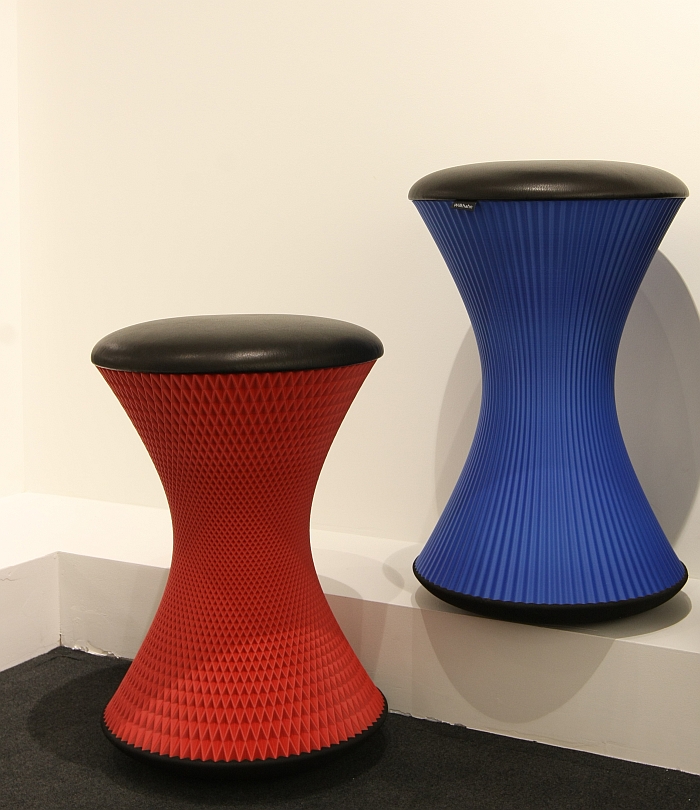
Whereas 3D printing is omnipresent in the media, and a ubiquitous tool in contemporary research and development, in most daily
NeoCon Chicago 2016 Interview: Tom Van Dessel, CEO, BuzziSpace America
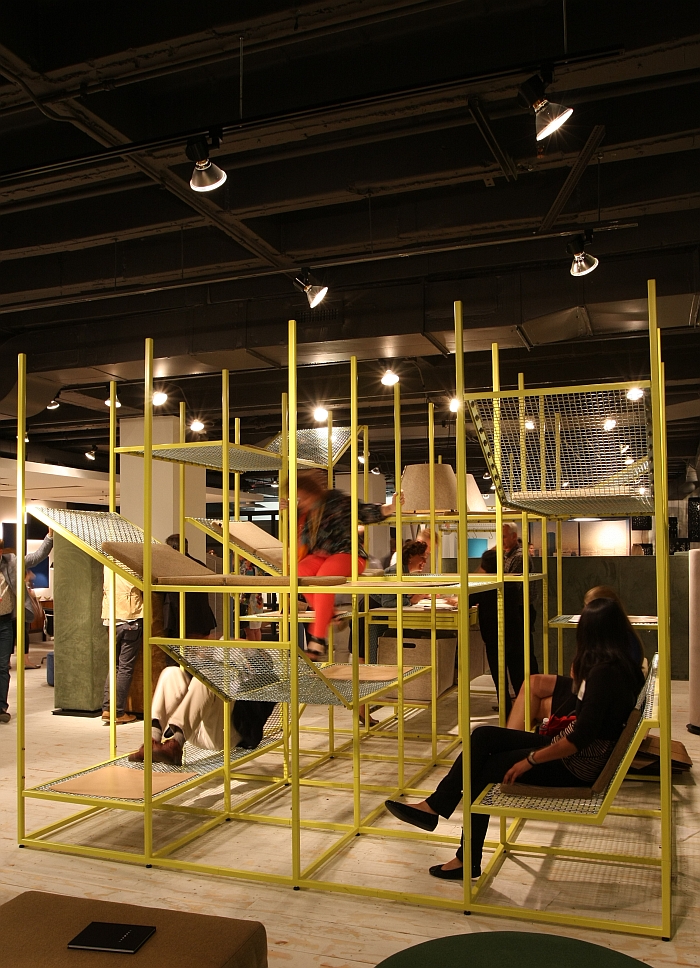
“The fact that you are European allows you to be quirky. Europe has a great reputation for good design but
Cologne Creative: Felix Stark – As a designer you always have to make it clear what you stand for
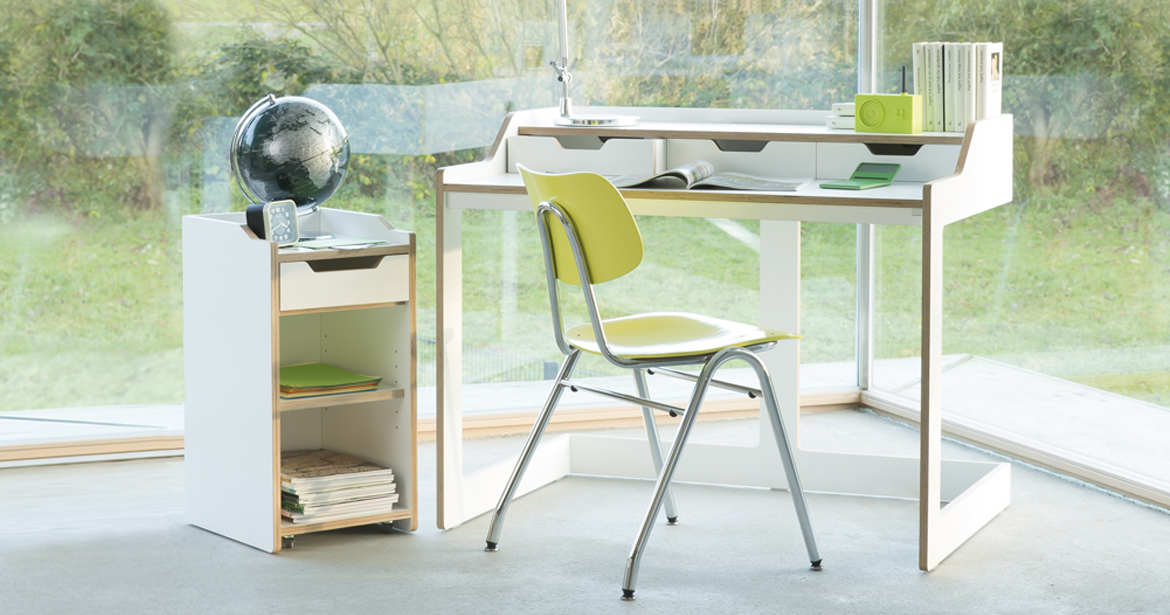
Continuing our series of posts on creativity in Cologne, historic and contemporary, we met up with product designer Felix Stark.
NeoCon Chicago 2016 Interview: Josef Kaiser, Chief Sales Officer, Vitra
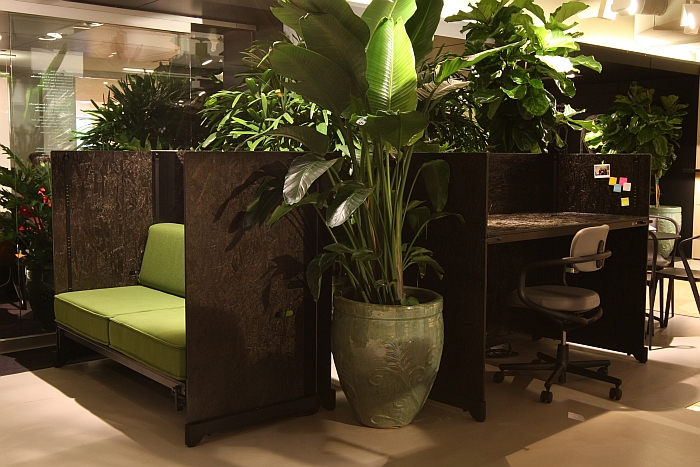
Although geographically the (hi)story of Vitra begins in Basel, spiritually it begins in America and arrives in Switzerland in 1957
smow blog Interview: Markus Jehs – Discourse is the most important aspect of design
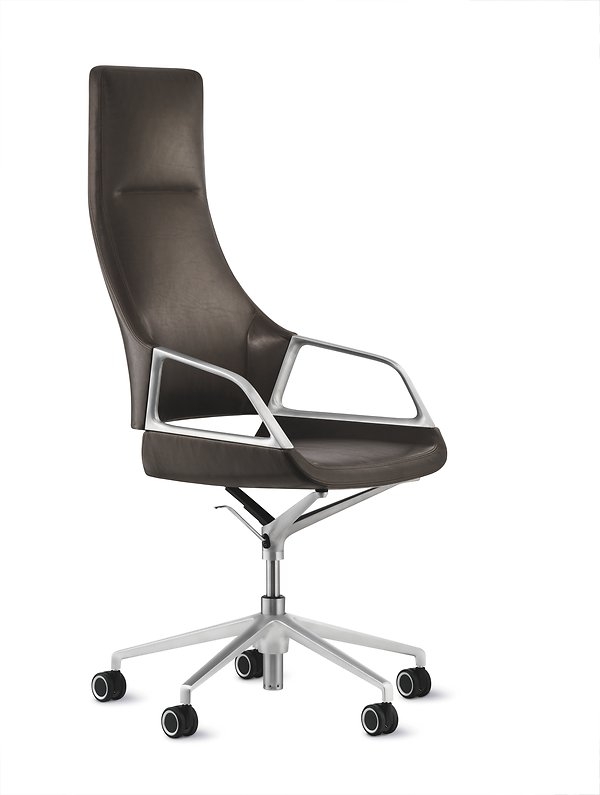
Although Stuttgart based design studio Jehs+Laub are in many respects best known as the winners of the inaugural Moormann Bookinist
smow Blog Interview: Tom Newhouse – aesthetics, sustainability, ergonomics and economy must be in equilibrium, if they aren’t the design isn’t finished
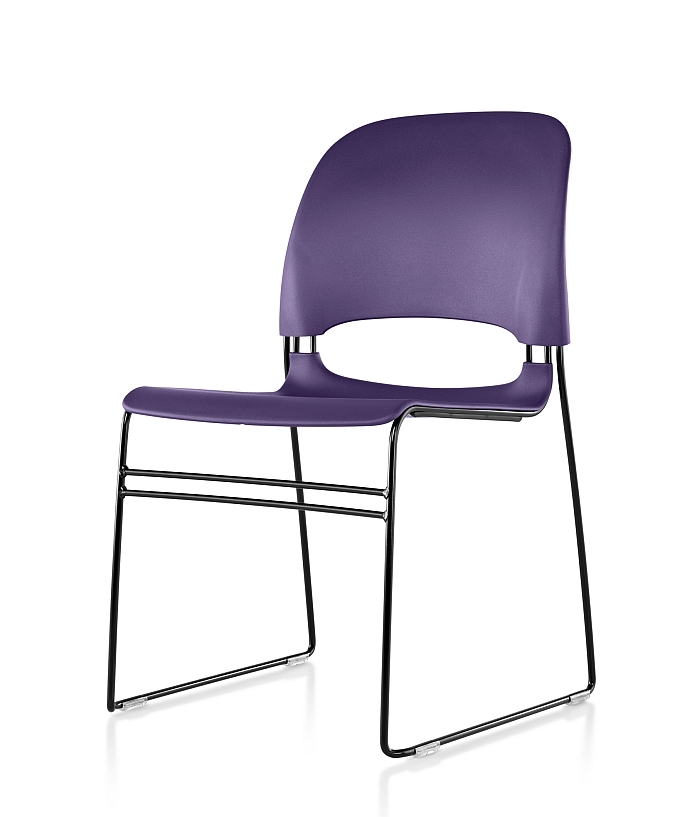
Born and raised in Grand Rapids, Michigan, a town famous for some 150 years as a, if not the, centre
